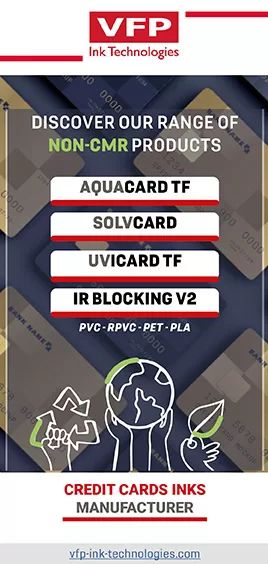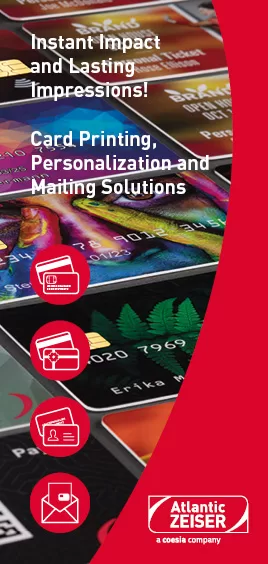
by Jennifer Kohlhepp | CM Magazine Featured
LED Technology Grows Up, Offers New ‘Wow’ Factors to Card Issuers Looking to Stand Out
CPI R&D engineer discusses tech advancements, growing market for LED cards
Kyle Christianssen became used to the inquisitive looks and questions when the senior research and development engineer at CPI performed a field test of an LED card.
“You see a response from almost everybody who’s got line of sight to the reader,” said Christianssen. “It’s an eye-catching effect with an instant wow factor.”
Despite their growing popularity, LED cards are far from commonplace, particularly in the United States. Thus, Christianssen found himself explaining the technology to curious onlookers.
LED cards are still a novelty, but thanks to continuous innovation—both with the cards themselves and the now-ubiquitous nature of contactless pay options—interest in markets across the globe is increasing.
“Customers have been excited about LED cards for a long time,” said Christianssen. “As the technology has grown and improved over the past decade, so, too, has the desire to use it to highlight and elevate brands.”
Whether it’s the illumination of a brand mark or activating part of a more elaborate design—such as lighting the headlights on a vehicle sketch or a specific element of a brand character—interest is growing.
“LED cards, much like other newer technologies, are a conversation-starter,” said Molly Toomey, senior product marketer for CPI. “They create an experience for the user and those around them, and card issuers can place their brand at the center of that.”
The Early Years
The use of LEDs in card designs started how most new technologies do—with a rough proof of concept that had many challenges to overcome. Payment cards are susceptible to mechanical wear and bending, and LED technology had to adapt.
“Our early prototypes relied a lot on electrical connections that were made during our lamination process,” said Christianssen. “During the lamination process, several layers of PVC were sandwiched together, and heat and pressure were applied to fuse all of those plastic layers.”
Those prototypes relied on the connections between layers to deliver power to the LEDs. Any gaps in that construction created little pockets of air, which resulted in cosmetic defects on the surface of the card, undesirable indentations, etc.
“Some of our earliest prototypes never made it to the commercial market but they helped set the stage for where we are today,” said Christianssen.
New Technologies Drive Consolidation and Simplification
LED manufacturers are now able to contain all electrical components and the corresponding connections in a single high-quality inlay to be integrated into cards by manufacturers like CPI.
“Getting everything consolidated into a single layer and simplifying the electronics behind it has gone a long way in making LED cards commercially viable and accessible,” said Christianssen. “We’ve also seen significant improvement with the materials, adhesives and resins that are now included in the construction that allows us to achieve a much flatter, uniform surface.”
While the earliest designs involved single points of light, other technologies allow for the illumination of a region. Another key advancement: an integrated microcontroller that produces blinking sequences of LEDs in various colors.
“Customers have more flexibility with placing the lights to support a customized design,” said Christianssen. “Anything with a character has proven to be a pretty good use case because the novelty aspect is kind of inherent in the technology.”
Technological Enhancements Spur Growth
Enhancements to LED technology and improved electronic components increased durability. There have also been improvements to the way light can be cast over larger areas which has spurred creativity and innovation.
In addition, the fact that LED cards require a contactless transaction previously limited their usefulness. The vast majority of the market—both in terms of point-of-sale systems and end user adoption—is now ready to support their everyday use.
“It’s no longer a niche product being made by one or two companies overseas,” said Christianssen. “There’s a lot of players in the field and all of them are trying to stand out and compete with one another.”
For the card manufacturer, that provides an advantage. Lots of partners are now available, all of whom are trying to make their own processes as efficient as possible to offer the lowest price.
“We are in contact with a lot of manufacturing partners, and they’re constantly developing new variants to the technology,” said Christianssen. “They know we’ve worked with LEDs for a long time and that they continue to be a priority for us as a company, so they’re always excited to show us their latest developments.”
It’s also an exciting time for card issuers, as they are able to continue to leverage—and push the boundaries of—LED technology to differentiate themselves.
“LED tends to open up more doors on the design side that customers find attractive, and that definitely generates more willingness to invest because it gives them more of an opportunity to create a unique offering.”




